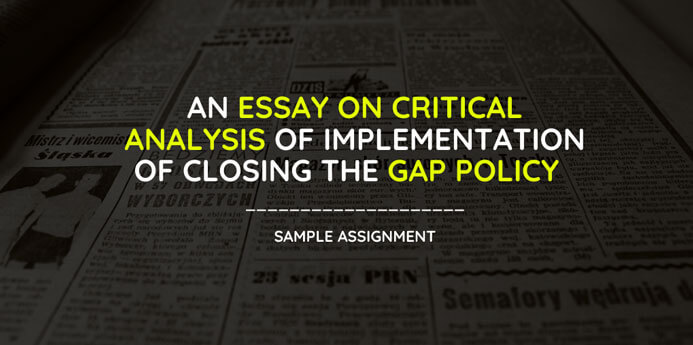
While writing essays in school or college, your professors must have mentioned the TEEL structure. However, it may not be easy to understand it in one go. That is why today we will be discussing TEEL in detail and learn how to follow a logical and defined structure that can help you present your thoughts. Let us get started!
What Is The TEEL Structure?
Some of you may have heard this term before, others may be coming across it for the first time. No matter what your position, today’s write-up will help you understand the English TEEL structure in detail so that you can use it effectively in your essays and other forms of academic writing.
TEEL is an acronym that stands for:
- T- Topic sentence
- E- Explanation
- E- Evidence
- L- Link
Each letter in this acronym gives a brief description of the different kinds of sentences that are present in a paragraph. You can refer to our TEEL structure examples for a clearer understanding.
In any paragraph, your flow of thoughts should start from introducing the topic on which the paragraph is being written, then explain what your topic is about, this step is followed by providing evidence that supports your arguments, and finally, you conclude the paragraph by linking all the previous sentences together in a manner that gives a definite outcome.
How Is A TEEL Essay Structure Used?
Understanding the acronym is one thing, using it effectively in essays is a different ball game altogether. That is why we will be discussing each letter with examples so you can write TEEL structured essays:
Topic Sentence - Your topic sentence is important because it controls the direction the paragraph will take:
- This is the first sentence of the paragraph and tells your audience what you are going to discuss in the upcoming lines.
- It should not be a factual statement as a straight fact is less likely to keep the readers connected.
- Once the reader is done with your topic sentence, they should know exactly what they are getting into and what they will be reading about.
- In any TEEL structure template, you will see that your topic sentence is responsible for providing arguments that can be explored further in the paragraph.
- An argumentative topic statement leaves room for new evidence in the upcoming paragraph that keeps the reader engaged.
- Moreover, your topic sentence should always relate to the topic of your essay.
- For example, if your topic sentence is talking about the endangered species of animals, then every sentence after that should expand on it.
Explanation - Once you have introduced your topic structure, the next step is to explain it:
- The next three to four statements after your topic structure (depending upon the document’s length) have to elaborate on the topic sentence.
- Our online essay typer says that the explanation has to be brief but detailed enough so that the reader understands what the argumentative topic sentence was trying to convey.
- One way to do this is to go for greater detail. Do not try to summarise things but include all the details that will engage your reader.
- However, keep in mind that you should not add too many irrelevant details but keep it specific to a topic.
- Include supporting details and factual statements in your explanation to give the credibility of your argument.
- While writing your explanation, you need to ask yourself two important questions that will help you rule out any confusions:
- What exactly are you trying to convey?
- What points will help you argue for your topic?
- If you are not comfortable with explanations, do not start in a hurry. Get your thoughts in order before you start writing.
- Even if you have to spend a little extra time drafting a detailed and catchy explanation, it will be worth in the end.
Evidence - After your explanation is done, the next step in your TEEL essay writing structure is to add credible evidence to it:
- Now that you have already presented your thoughts and arguments, it is time to justify and support them.
- Your task is to back your claims with authentic evidence that shows the readers that you are right.
- Here, we are talking about evidence in terms of literature. It can be a relevant quote, journal article, speech by some experts, etc.
- Some questions that you can ask yourself before actually finalising the evidence for your essay are:
- What proof do you have that justifies your claim?
- Is there anything in your literary sources that supports your claims and is not ambiguous?
- Have you collected all the points and sources that will prove to your audience that your facts are true?
- Once you have run your evidence through this checklist, you will see that you are on the right track.
- Keep in mind that you must maintain a balance between evidence and explanations. Our essay writing help online can assist you in doing that effectively.
Link - Finally, we move on to the last sentence of the paragraph that will show your audience the linkages in your work.
- The linking sentence aims to present a summary of your paragraph in a single sentence.
- It has to link back to the key terms from your sentence/essay topic.
- This is only possible once you have finished explaining your arguments and backing it with evidence.
- Even though it is similar to a topic sentence, our assignment help experts pay great importance to it as it ties everything together in the end.
- For example, your linking sentence could start with the words: “This shows that…” or some other sentence like this.
- A linking sentence also provides a mini-conclusion to all the evidence.
- Once you have put it all together in the correct order, you will get a clear, well-framed paragraph for your essay.
We hope the above-mentioned points will help you stay on track and write an essay according to the TEEL structure easily.

What Does A TEEL Paragraph Structure Include?
TEEL is not a set of rules that need to be followed while writing a paragraph or an essay. Rather, it is a technique that can be used alongside existing rules to add value to your work by providing it with a better paragraph structure. The common rules that you should keep in mind while writing a TEEL structured paragraph in an essay are:
- Your paragraph should only follow one topic at a time.
- An essay can contain three to five paragraphs.
- A single paragraph generally contains four to six sentences (or more depending on your document’s length)
- These are the basics of a TEEL paragraph. If you want TEEL paragraph structure examples, we have those too.
- The general size of a paragraph is about half a page.
- The flow of sentences in every paragraph must follow the TEEL structure to keep your readers engaged.
- Once you have finished writing your paragraph or essay, follow it up with a strict proofreading regime.
Some Useful Tips To Write A TEEL Paragraph
Brainstorm - As we said before, TEEL is not a set of rules but a writing technique that helps you give structure to your paragraphs. That is why it is important to jot down all the essential information about the topic beforehand. You need to identify the main deliverables of a paragraph like:
- What should be the topic of the particular paragraph?
- What arguments will you be making?
- What evidence is most relevant to your topic?
- What makes the topic of the paragraph important to the subject of the essay?
Formal Language - Since paragraph structure TEEL is generally used in academic or formal essay writing. It is pertinent to use formal language while framing the sentences and writing your paragraphs. The formal language will emphasise the content and make your writing more credible. You should keep the following points in mind while writing your paragraph:
- Do not use colloquial words or slang.
- Do not use words like you’ll, won’t, or can’t.
- Avoid hyperboles and exaggeration.
The Third Person Perspective - Keep in mind that since essays follow formal language, you should always phrase your paragraphs in the third person. Using the first person makes your work more casual and reduces its impact and credibility. However, with the third person, there is an emphasis on the context and facts that have been presented in the essay instead of it being a personal opinion. Remember to use the correct pronouns while referring to someone.
Formatting- Always check your punctuations and formatting style before submitting the essay. You must follow all essay paragraph structured TEEL guidelines that have been set by the tutor or examiner to get good marks. Additionally, correct citations are important to avoid plagiarism. Use quotation marks wherever necessary.
Proofread- Once you have completed your final draft, proofread it, again and again, to make sure that you have followed all the guidelines and all the content is of utmost relevance.
- Give specific attention to the paragraphs in your essays and see that the flow is according to the TEEL structure.
- Weed out all typos and grammatical errors during this time.
If you still have any doubts about the TEEL structure, you can reach out to our essay writing company and we will do our best to solve your queries. Now, draft your essays like a pro or contact us in case of any issue.









Loved reading this Blog? Share your valuable thoughts in the comment section.
Add comment